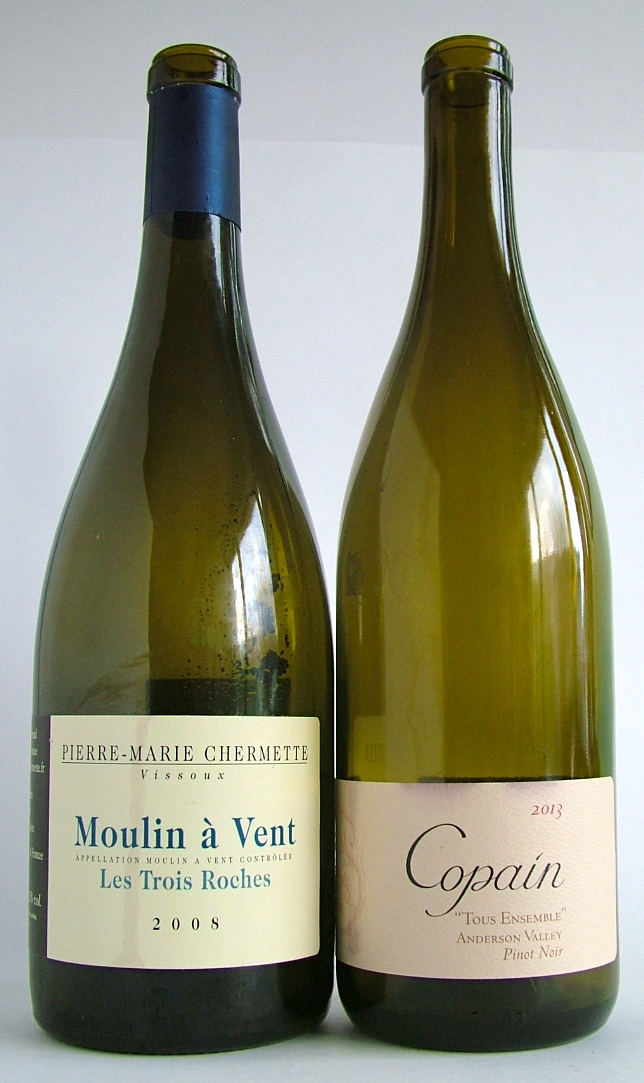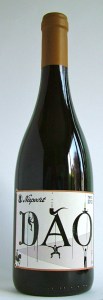My week in wine (and other drinks)
I drank some very good wines this week. The highlight was the Brunello di Montalcino Reserva 2000 from Col d’Orcia, but a seven year old Beaujolais provided the nicest surprise. I went to the Tesco press tasting, which I found disappointing, as I had with Aldi the week before; lots of clean, correctly made wines, lots of big names like Chablis and Châteauneuf but very little to get excited about. A few euros more really does buy you a lot.

The Black Boar Imperial Oatmeal Stout
This is made by the White Hag Irish Brewing Company, who are based in Sligo, and appeared in my Irish Times online article Take it Home. The company is uncompromising in its attitude ‘We don’t do an accessible red ale, stout and lager like most of the others. Our beers are big and bold, American style made using Irish ingredients where possible. We have a heather ale made without any hops. Our water comes from a bog and is very soft, ideal for stout. It doesn’t have to be treated, filtered or pasteurised.’ So said Joe Kearns, the brewer.
The Imperial stout was textured and packed full of flavour. I sipped a glass slowly one evening. Big (10.2% but never burns), bold and full of roasted barley and dark chocolate, with a lovely smooth texture, this demands careful contemplation on cold winter nights.

Joe Kearns, brewer at The White Hag
Moulin-a-Vent Les Trois Roches 2008
Pierre-Marie Chermette, Domaine du Vissoux
That’s right, 2008. I had read reviews waxing lyrical about aged bottles of the above wine. As they are one of my favourite producers, I laid down three bottles five years ago. This was the first I have tried. Moulin-a-Vent has a reputation for ageing but I have only every tried old bottles on a few occasions. It was delicious, light and elegant, very Pinot in style, with wonderful aromas and delicate sweet fruits. The current vintage is available from www.terroirs.ie for €29.50.
Domaine de Sainte Marthe Syrah 2014 IGP Pays d’Oc
This is a wine I have followed for many years, and was once responsible for importing it into Ireland. It is made by the Bonfils family who own twenty estates in the Languedoc and another three in Bordeaux. Generally they make good quality modern wines. The Syrah is a very attractive smooth medium-bodied wine and excellent value at €10.50 from Dunnes Stores. One to cheer you up on a wet Wednesday.

Copain “Tous Ensemble” Pinot Noir 2013
Anderson Valley, California
My sister Frances, who works as a chef in San Francisco, always brings me back an interesting bottle or two on trips home. This wine is from the cool Anderson valley north of the Napa and Sonoma Valleys. I travelled up there with Frances a decade or so ago, and loved the wild countryside and the laid-back winemakers. I remember a great visit to Navarro winery who mades some lovely wines and a very good verjus. We also visited Louis Roederer who have their highly successful American sparking wine operation here. Sadly very little gets over here to Europe.
This Pinot was light, juicy and very moreish with lovely succulent vibrant sweet cherry fruits. 12.5%. It is priced at $28 on their website. If only we could get more like this in Ireland.

Brunello di Montalcino Riserva 2000, Col d’Orcia
I was fortunate to drink this at a corporate dinner with a leading firm of solicitors – I was doing the talking. It was an enjoyable evening with some great wines and some very knowledgeable solicitors.
I have never really ‘got’ Brunello, or at least the prices they charge. A few years ago, I spent a day tasting with Erin O’Keefe, Boston-Irish author of a great book on the subject, simply titled ‘Brunello di Montalcino’ published by University of California Press I felt I had advanced my knowledge if not my appreciation. We tasted the modern pumped up oaky sweet versions, which could have come from anywhere, and some deeply tannic, acidic young wines that really needed time. O’Keefe said they would eventually become almost Pinot-like with a cool savoury fragrance and elegant fruit. How right she was!
These magnums of Brunello were superb; the Riesrva is made from a single vineyard, Poggio al Vento, which in good years is released as a single vineyard wine. Pale in colour with quite delicate leafy mushroom aromas with some red fruits; the wine was fully mature with piquant red fruits underpinned by good acidity and light tannins on the finish. Very good with beef.
Posted in: Blog
Leave a Comment (0) →












 Dao Rótulo 2012, Niepoort, Portugal
Dao Rótulo 2012, Niepoort, Portugal Celler Pardas Rupestris 2013, Penedes
Celler Pardas Rupestris 2013, Penedes La Petite Ourse 2013, Côtes du Rhône, Pascal Chalon
La Petite Ourse 2013, Côtes du Rhône, Pascal Chalon e Grand Blanc 2012, Côtes de Thongue, Comte de Bertier
e Grand Blanc 2012, Côtes de Thongue, Comte de Bertier Cusumano Shamaris Grillo 2014, IGT Terre Siciliane
Cusumano Shamaris Grillo 2014, IGT Terre Siciliane Ottomarzo 2012, Tenute Dettori, Sardinia
Ottomarzo 2012, Tenute Dettori, Sardinia Frunza Pinot Noir 2014, Romania
Frunza Pinot Noir 2014, Romania Umbrele Merlot 2014, Romania
Umbrele Merlot 2014, Romania Paparuda Syrah 2013, Romania
Paparuda Syrah 2013, Romania Tio Pepe Palamino Fino
Tio Pepe Palamino Fino La Iña Fino sherry
La Iña Fino sherry